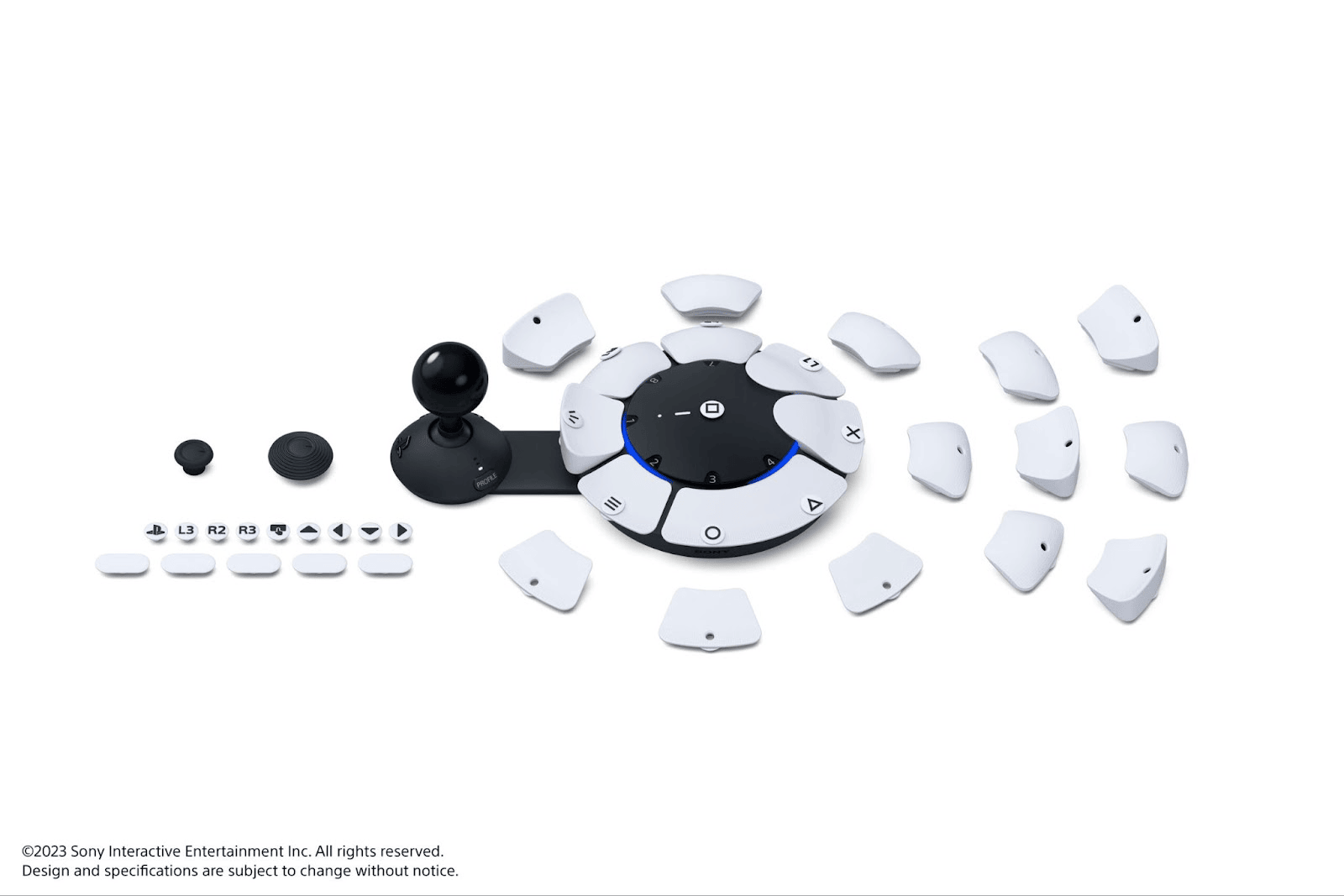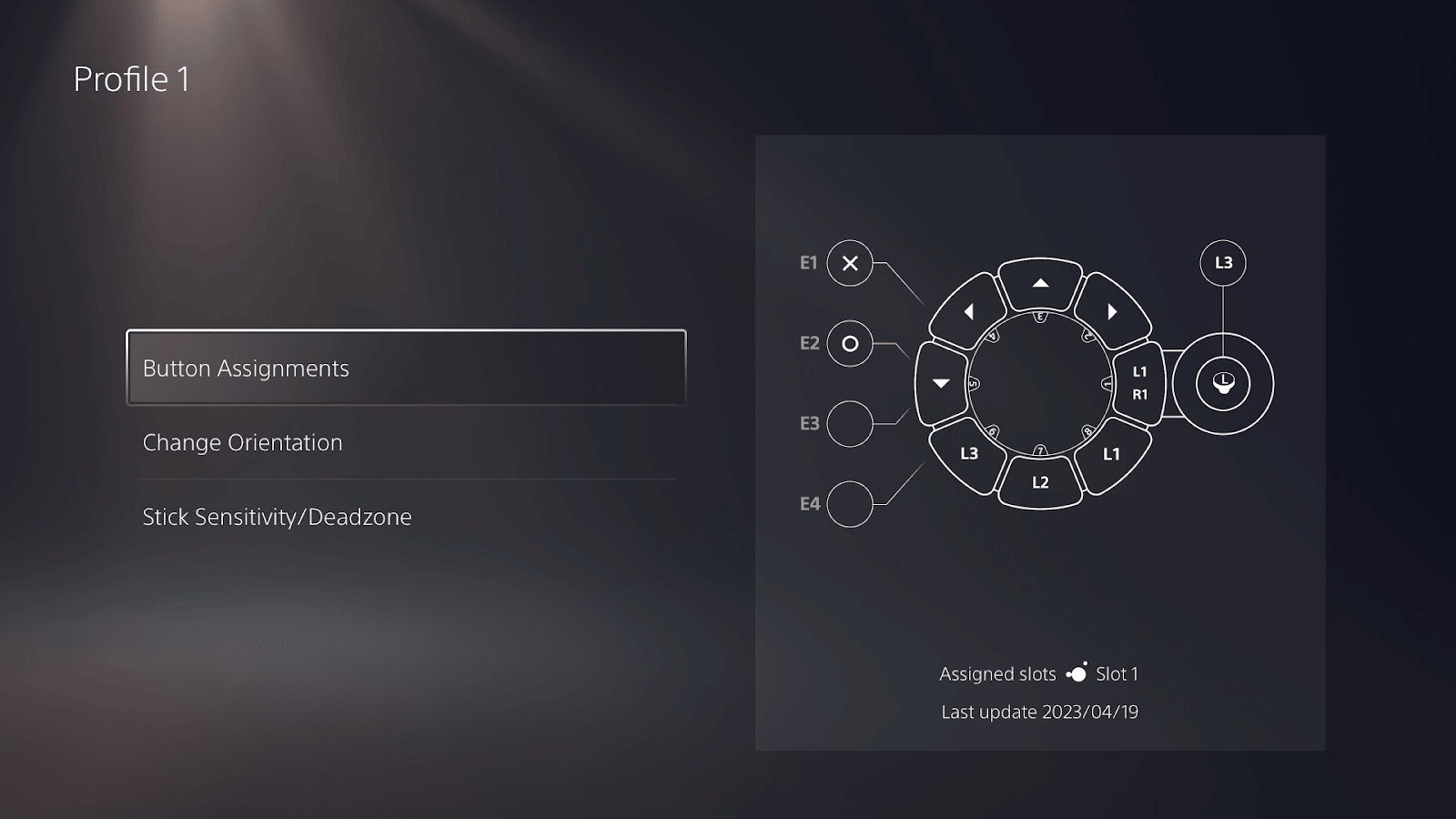While accessibility is an important topic year-round, May is always special as Sony Interactive Entertainment (SIE) recognises the strides made by the accessibility community and the games industry to make gaming more inclusive. The entire SIE team is committed to furthering that mission, and overnight has shared new details and images of the Access controller for the PS5 console.
New details and product images
First revealed at CES this year as “Project Leonardo,” the Access controller for PS5 is an all-new, highly-customisable accessibility controller kit designed to help many players with disabilities play games more easily, more comfortably, and for longer periods.
Developed in collaboration with accessibility experts, the Access controller will include a wide array of swappable button and stick caps so players can freely create different layouts that work for their unique strength, range of motion, and physical needs. Each Access controller will include:
- Analog stick caps (standard, dome and ball stick cap)
- Button caps in different shapes and sizes, including:
- Pillow button caps
- Flat button caps
- Wide flat button cap (which covers two button sockets)
- Overhang button caps (which benefit players with smaller hands as they are positioned closer to the centre)
- Curve button caps (which can be pushed if placed along the top or pulled if placed along the bottom of the controller)
- Swappable button cap tags for players to easily mark which inputs they map to each button
In addition, players can use the Access controller on flat surfaces, orient it 360 degrees, or easily secure the controller to an AMPS mount* or tripod. They can also adjust the distance of the analogue stick from the controller.

First look at the Access controller UI
Beyond the wide range of hardware customisation options, the Access controller features a myriad of ways for players to create personalised UI settings and configurations that unlock new ways to play.
Button mapping & control profiles. On the PS5 console, players can select their preferred orientation for the Access controller, map different inputs to the various buttons, toggle buttons on or off, or even map two different inputs onto the same button. They can also create and store their favourite control profiles for different games or genres (such as “combat” or “driving”).
Controller pairing and analogue stick adjustments. Up to two Access controllers and one DualSense (or DualSense Edge) wireless controller can be used together as a single virtual controller, allowing players to mix and match devices, or play collaboratively with others. Similar to the DualSense Edge wireless controller, players can also fine-tune the starting position and sensitivity of input. The ability to adjust dead zones (the distance your analogue stick moves before it’s recognised in a game) and stick sensitivity is particularly helpful for players to improve their fine motor control during gameplay.
Toggle mode. The Access controller also features a toggle mode, which allows players to adjust the behaviour of any button to work like a caps lock key on a keyboard. For example, if you enable toggle mode for the acceleration input in a racing game, the Access controller will accelerate the car without you needing to hold the button down.
Players can enable toggle mode for any programmable input. As an example, if a game only allows you to sprint by holding down “L3” (the left analogue stick), which can be physically challenging, you can change that input to behave like “click L3 to toggle sprint” by enabling toggle mode for the button you’ve assigned to L3.
Read more about the Access controller’s hardware features in the original blog post here, and visit this new web page here, where you can sign up for email updates and be informed when preorders launch, so you can secure your controller at the earliest opportunity.
To see the full list of features, and a video highlighting ongoing efforts across product development and PlayStation Studios teams to make gaming accessible for more players on PS5 head to PlayStation.com.








